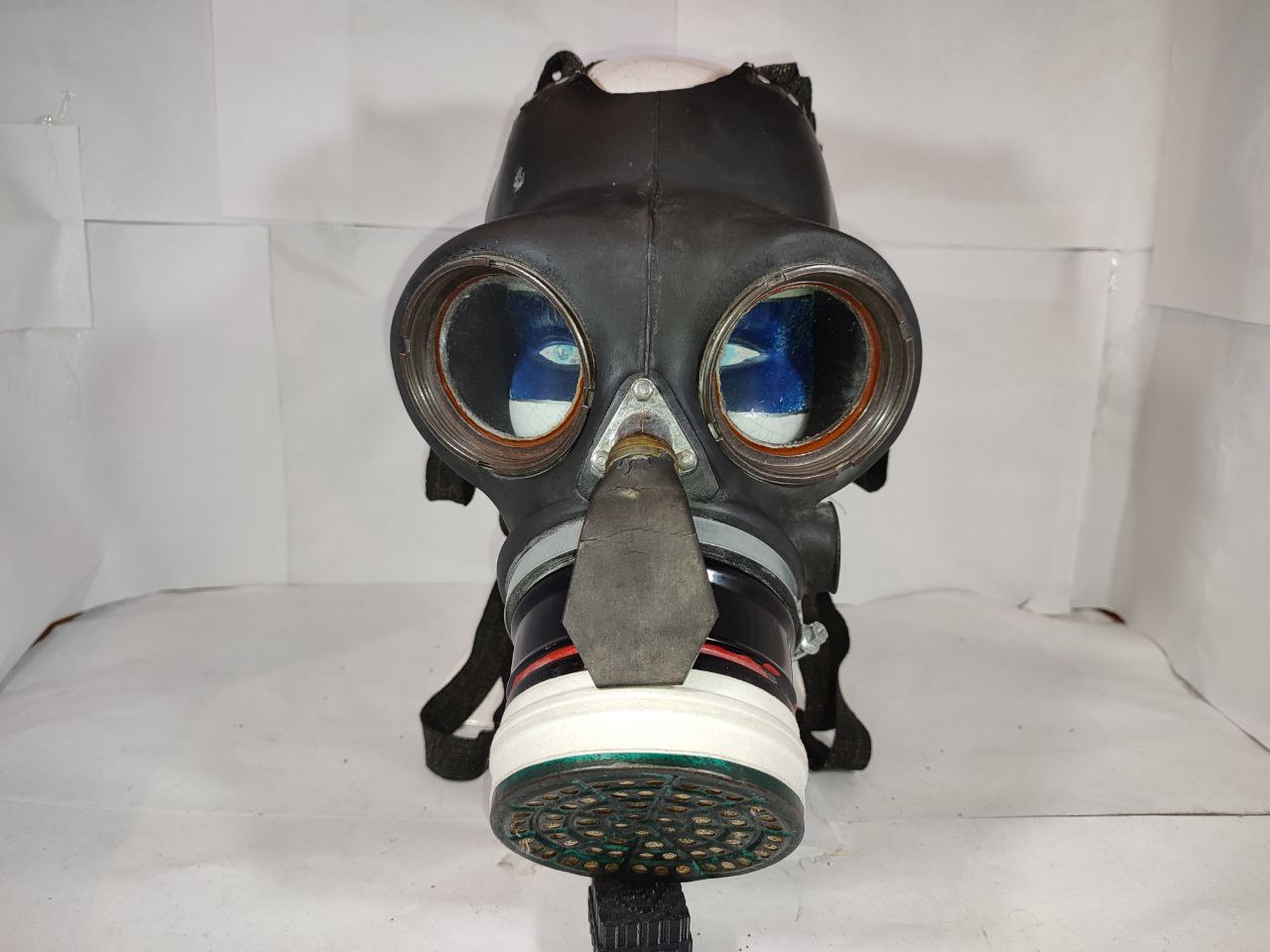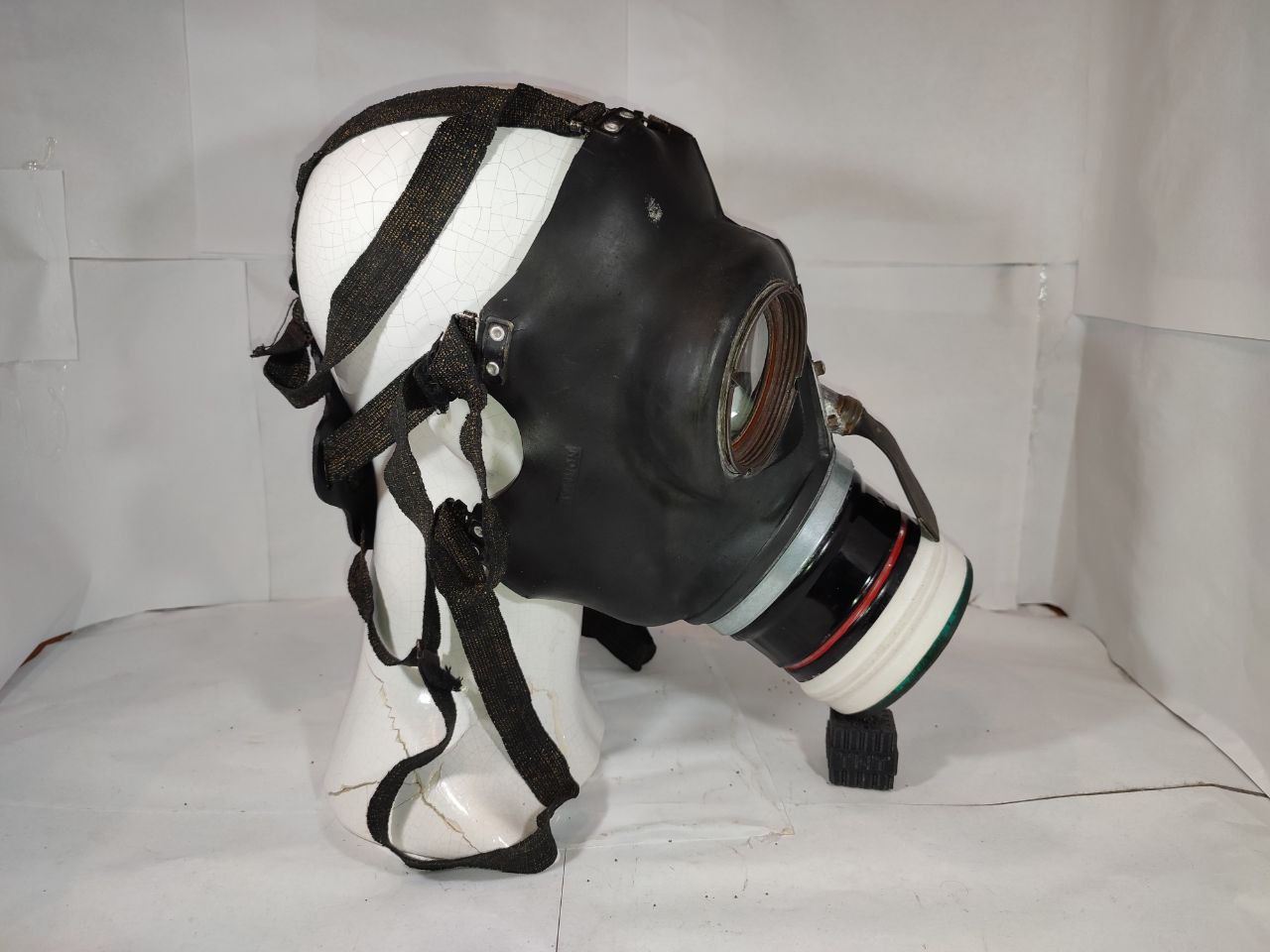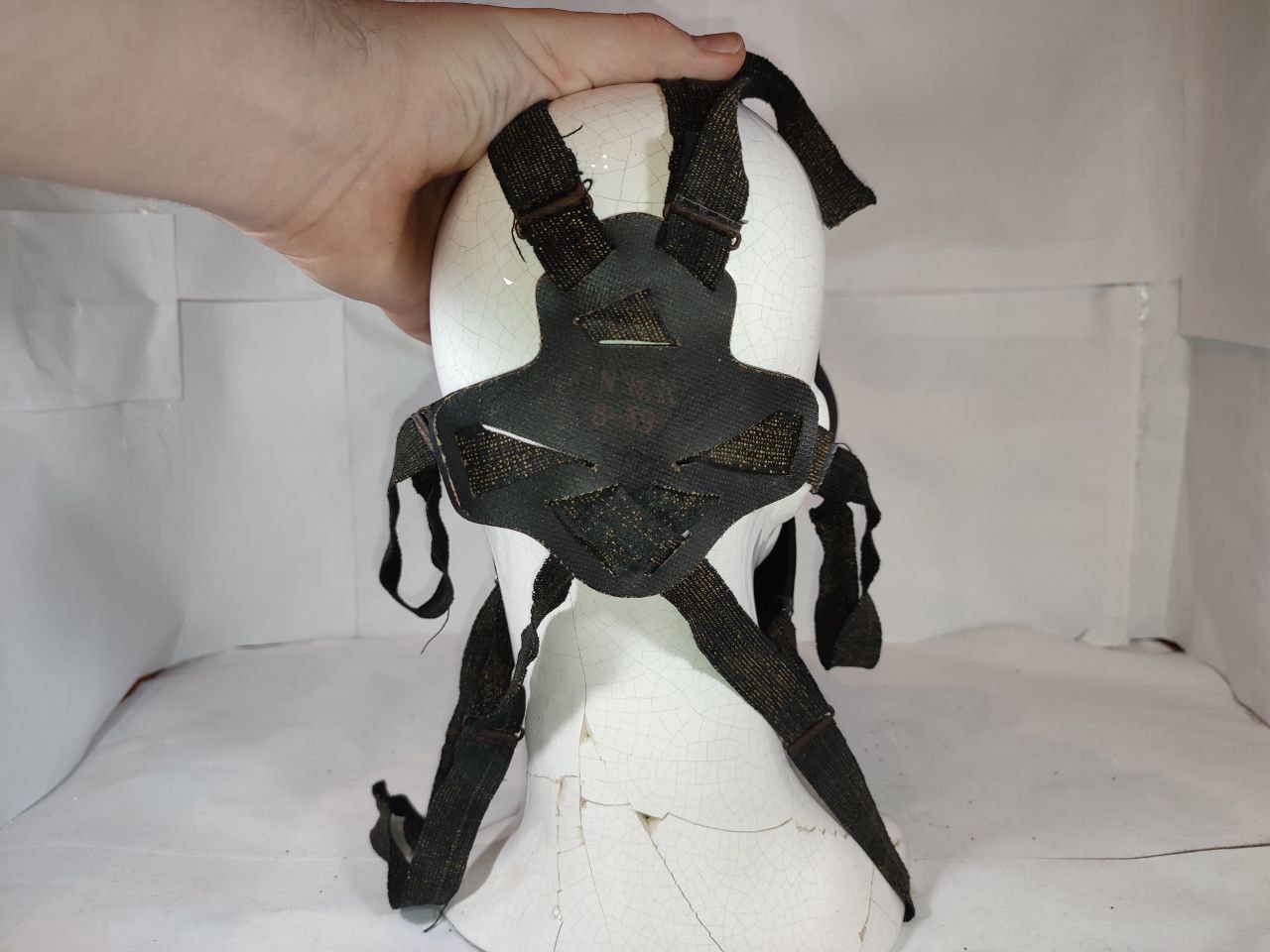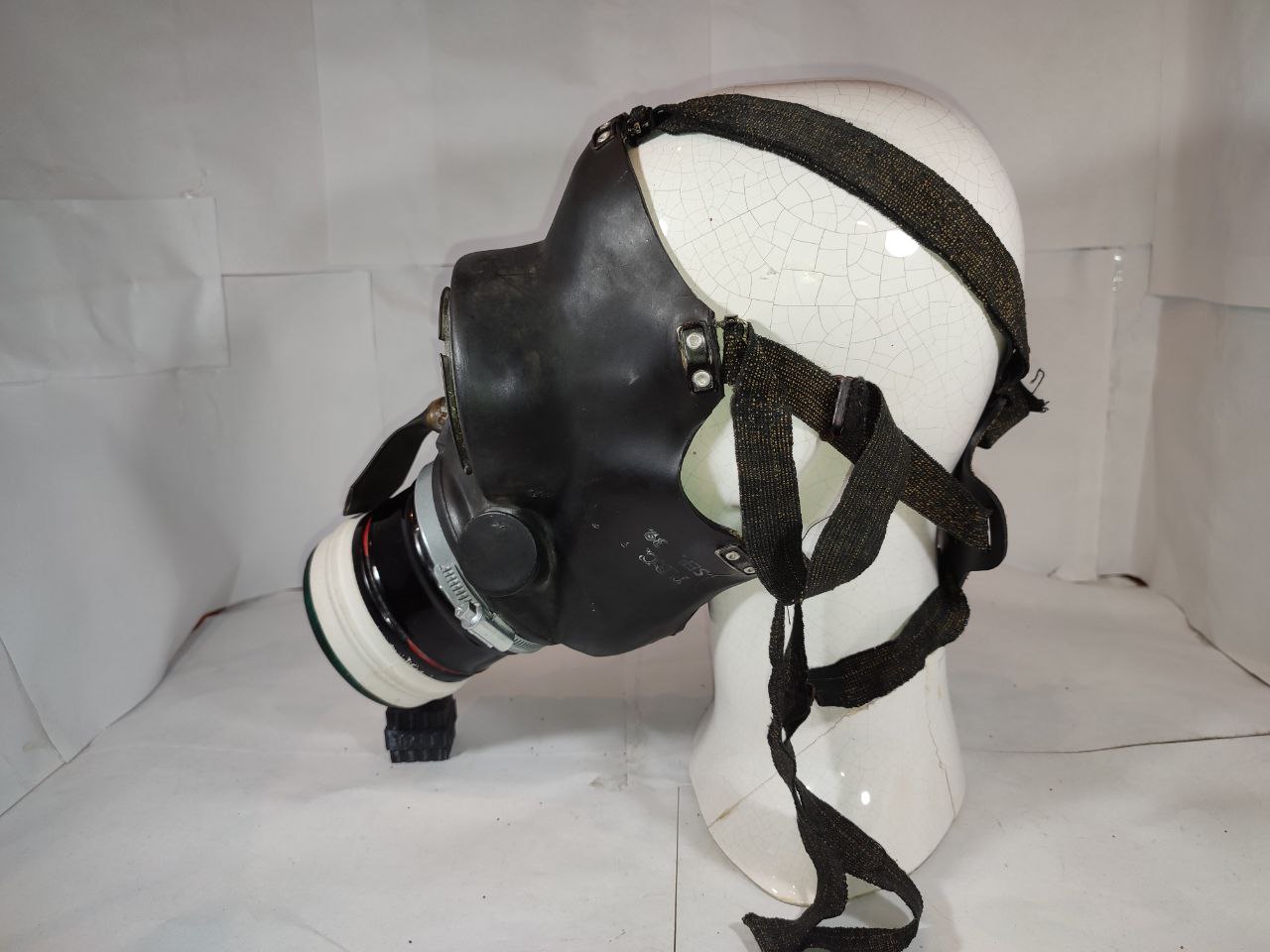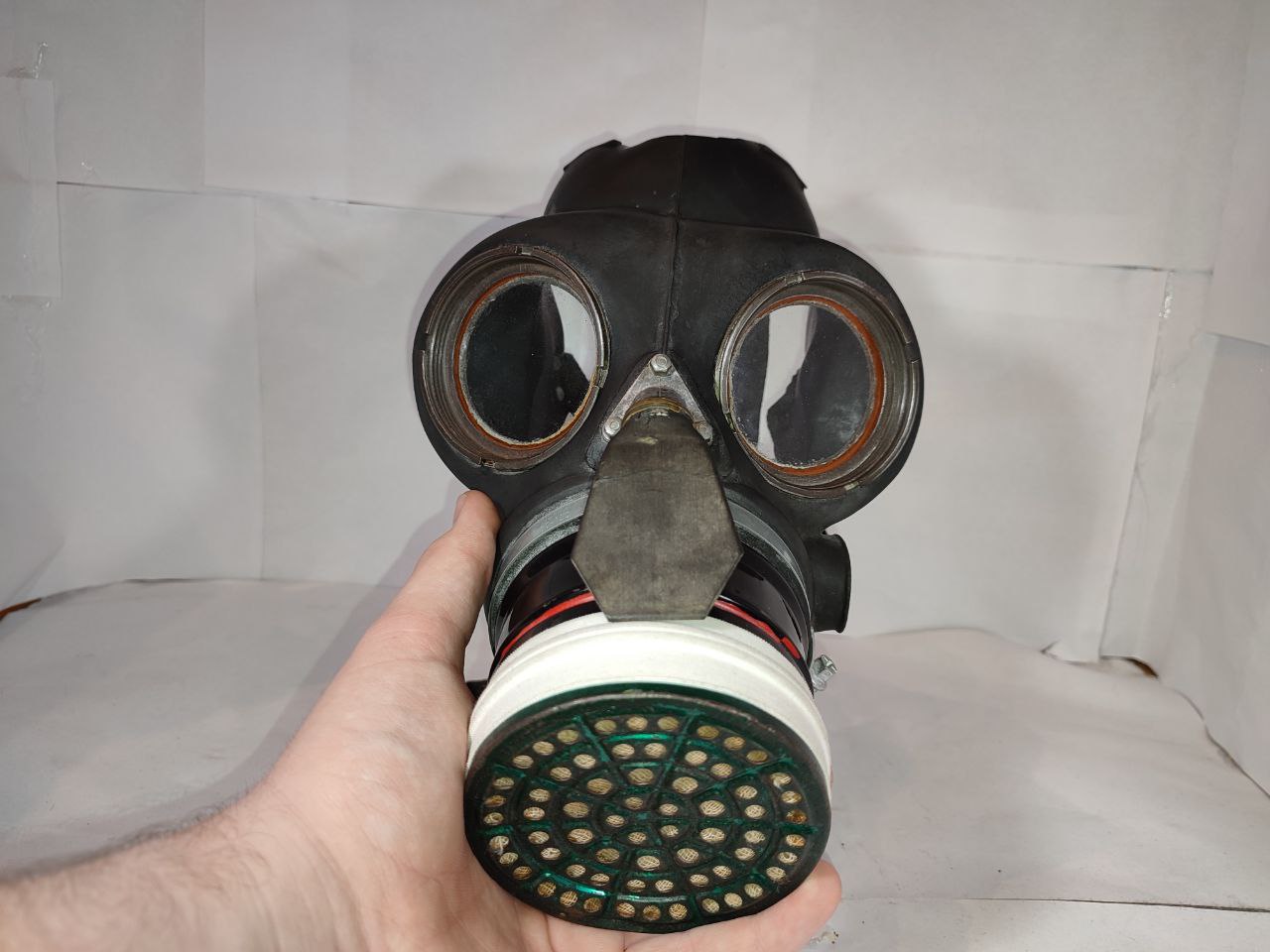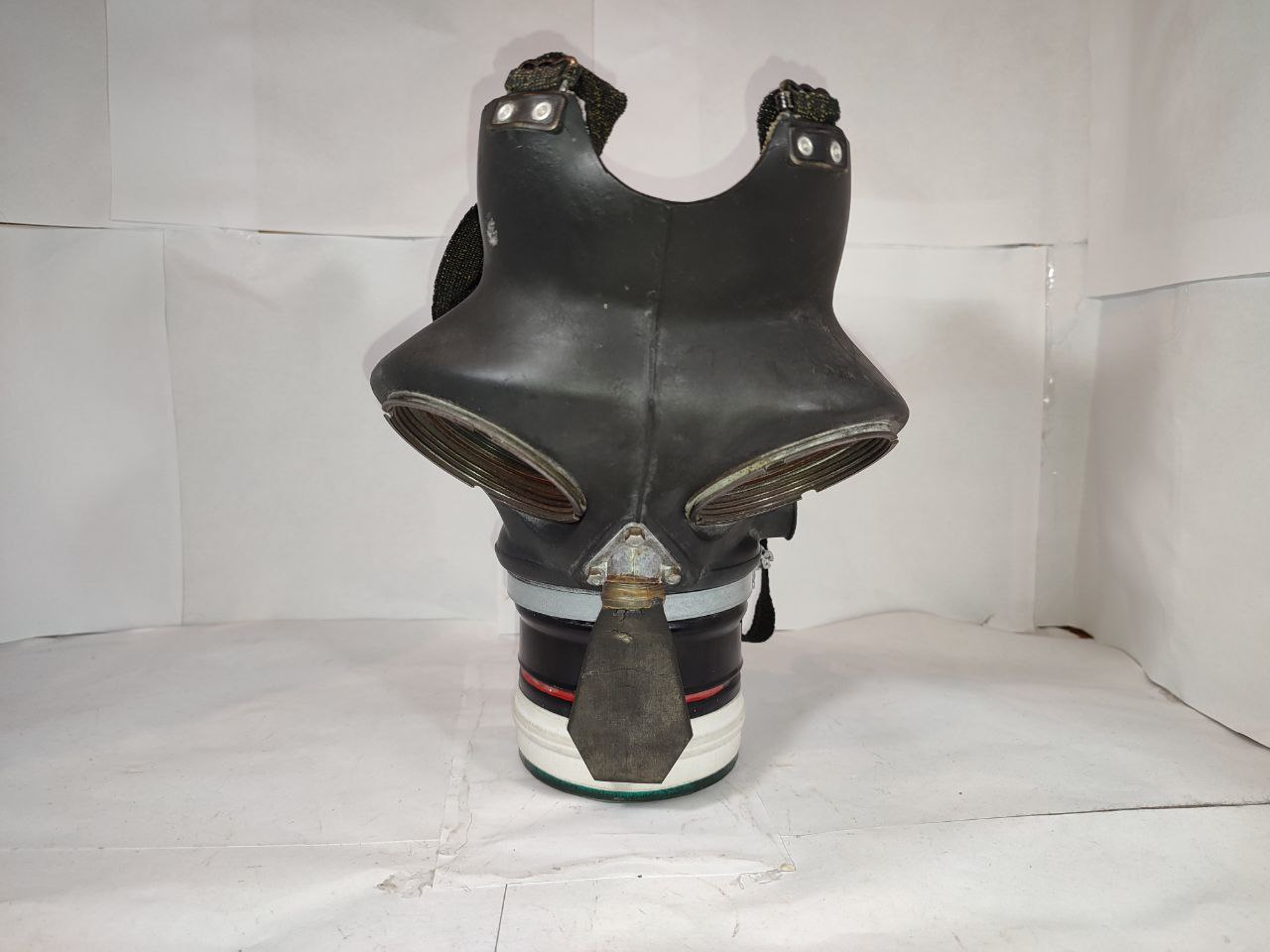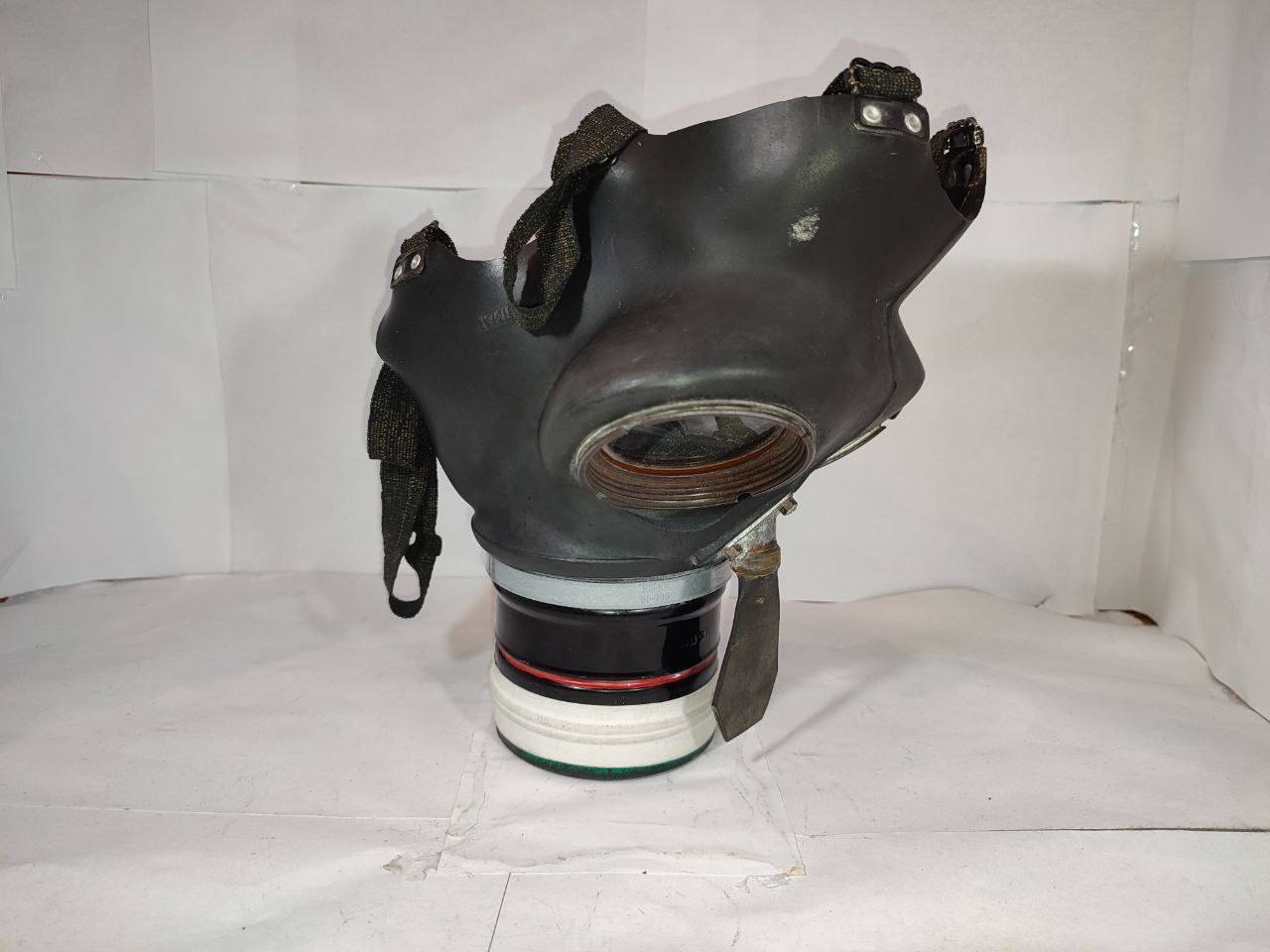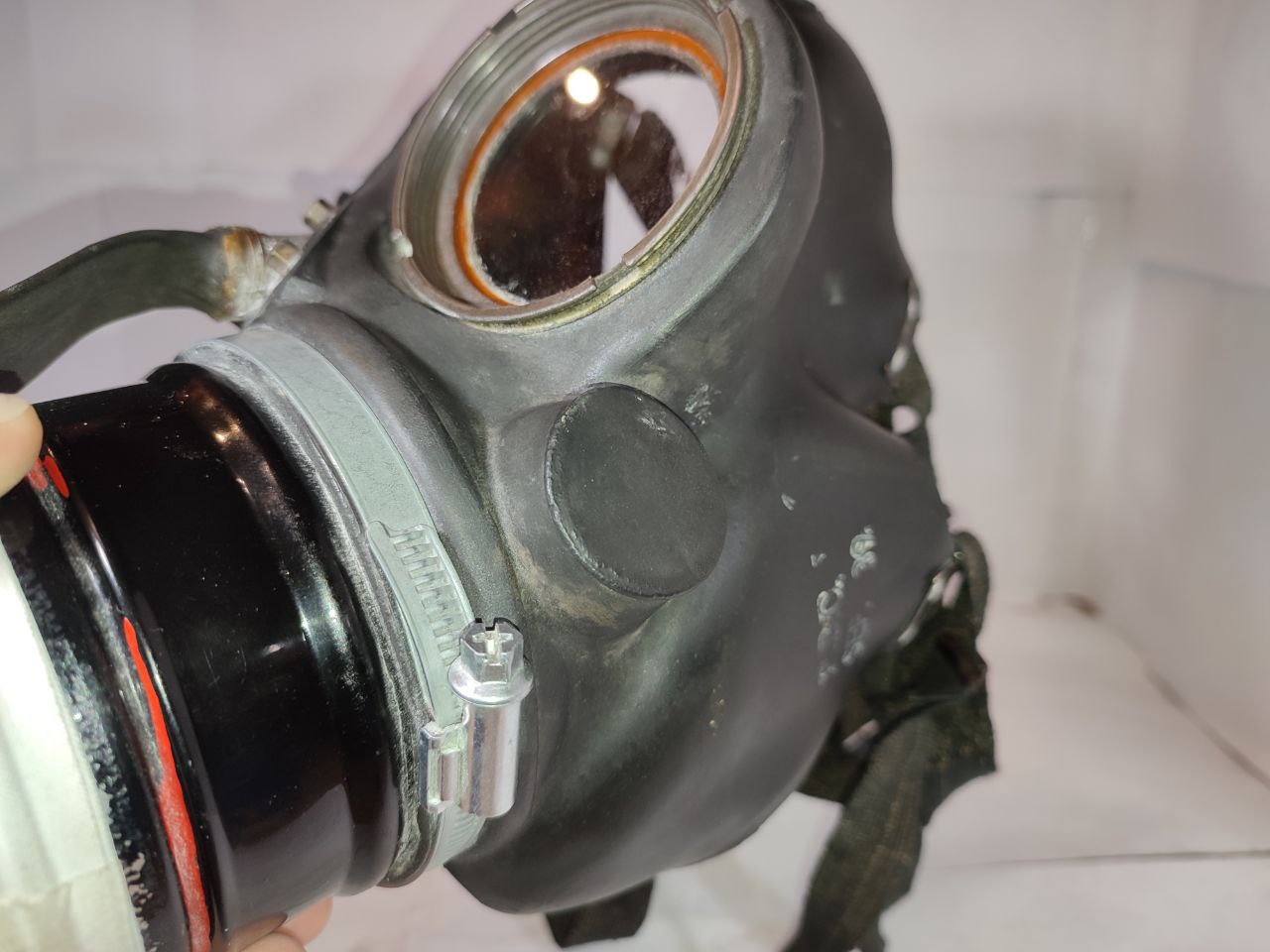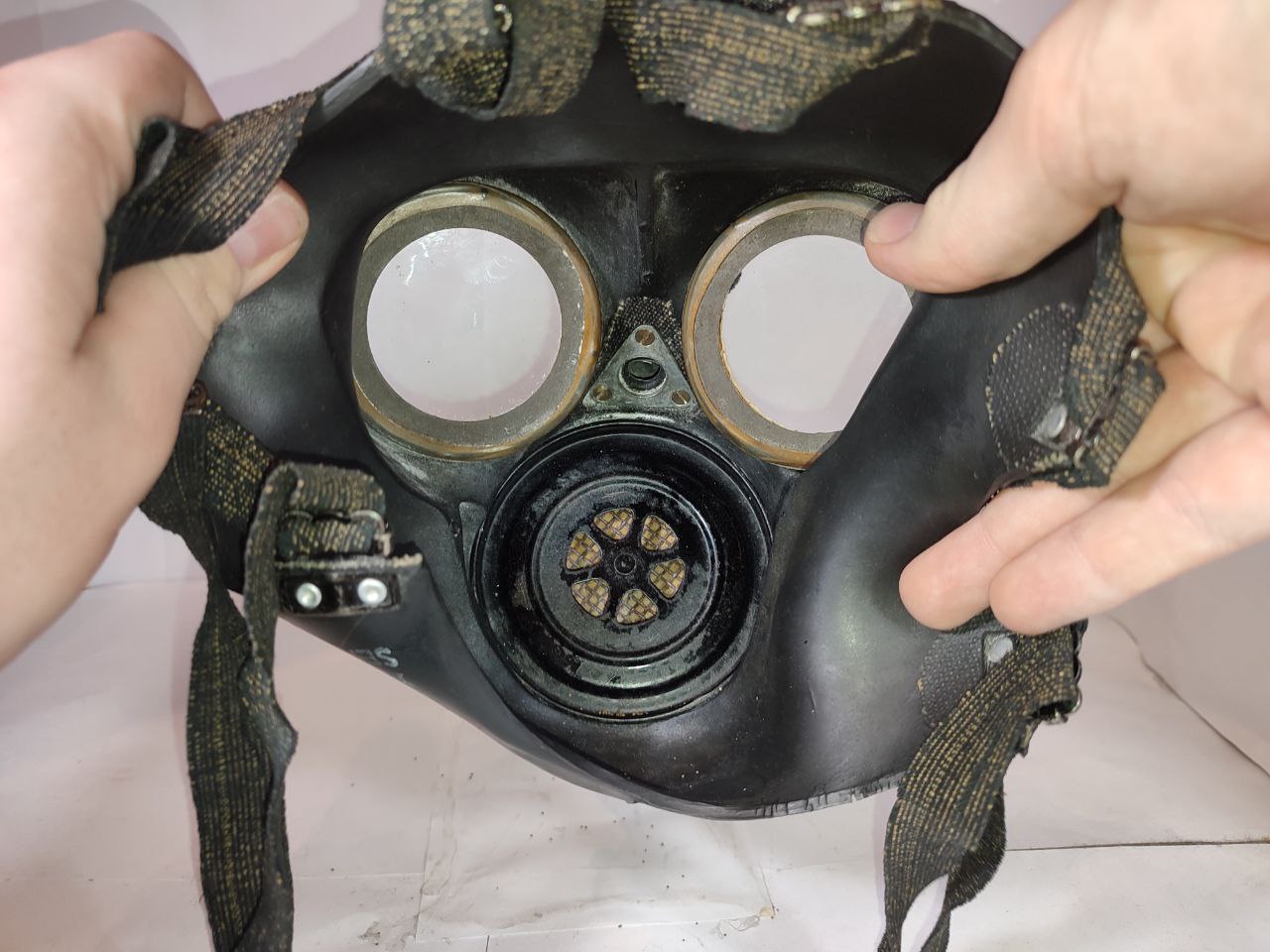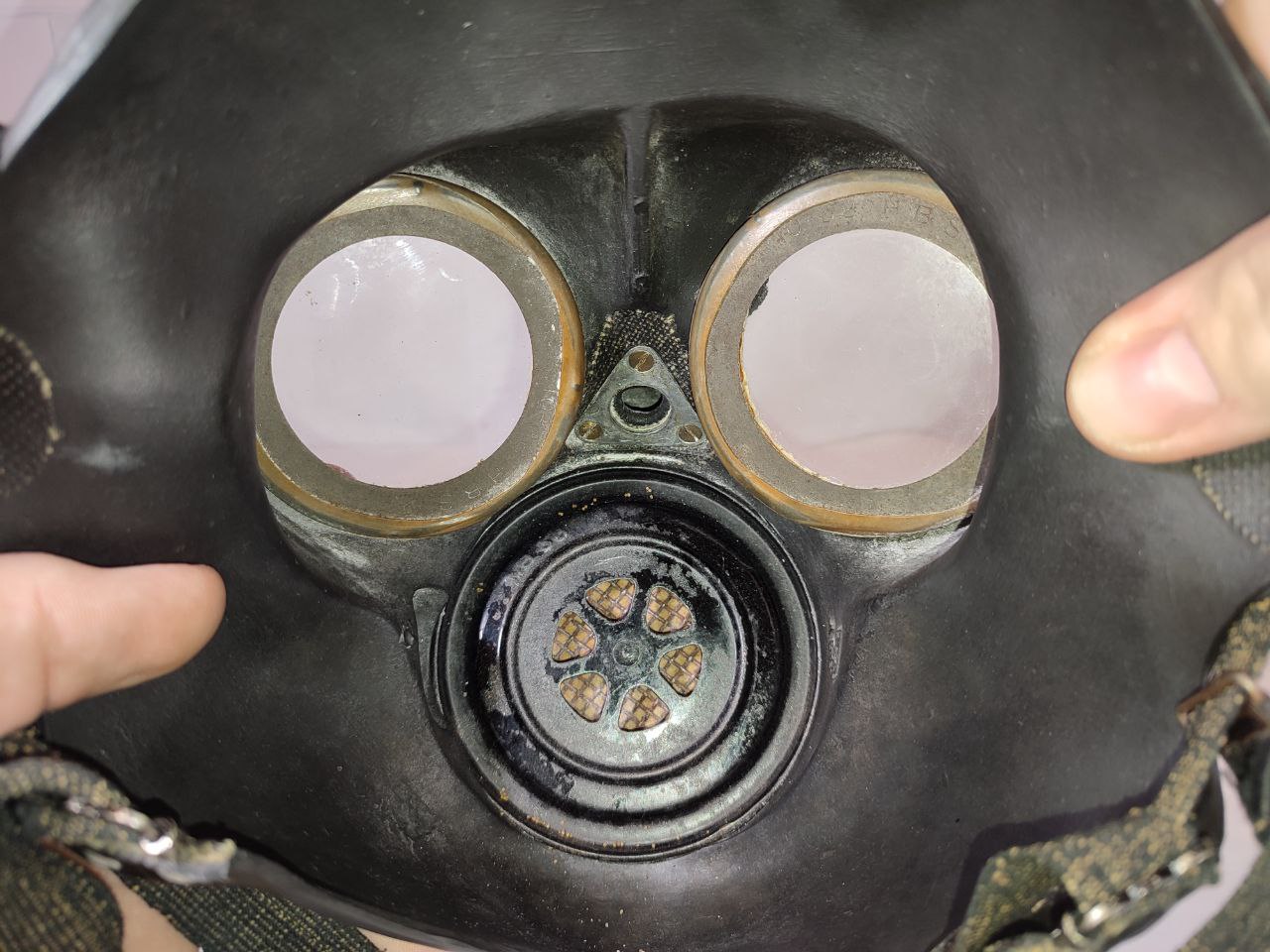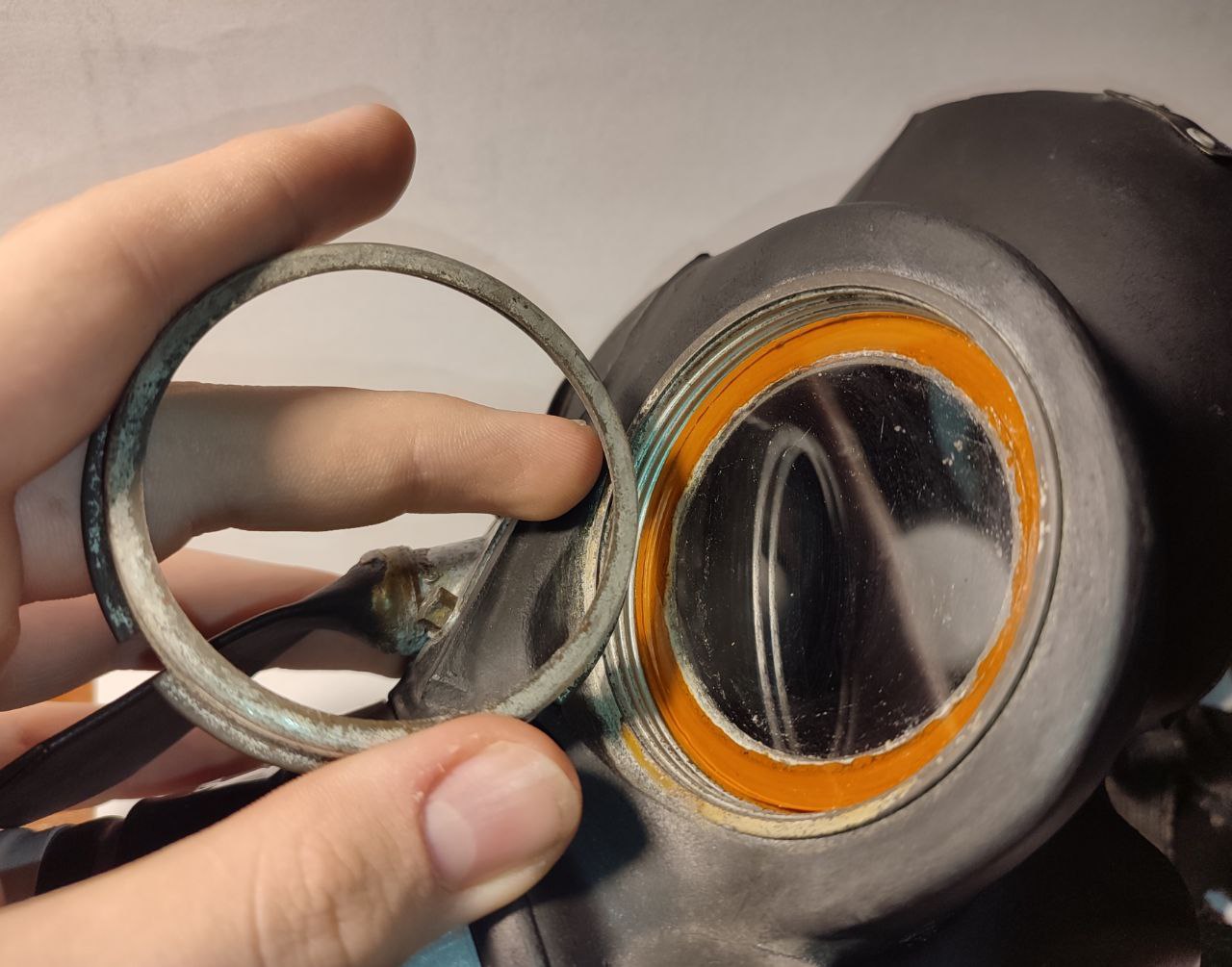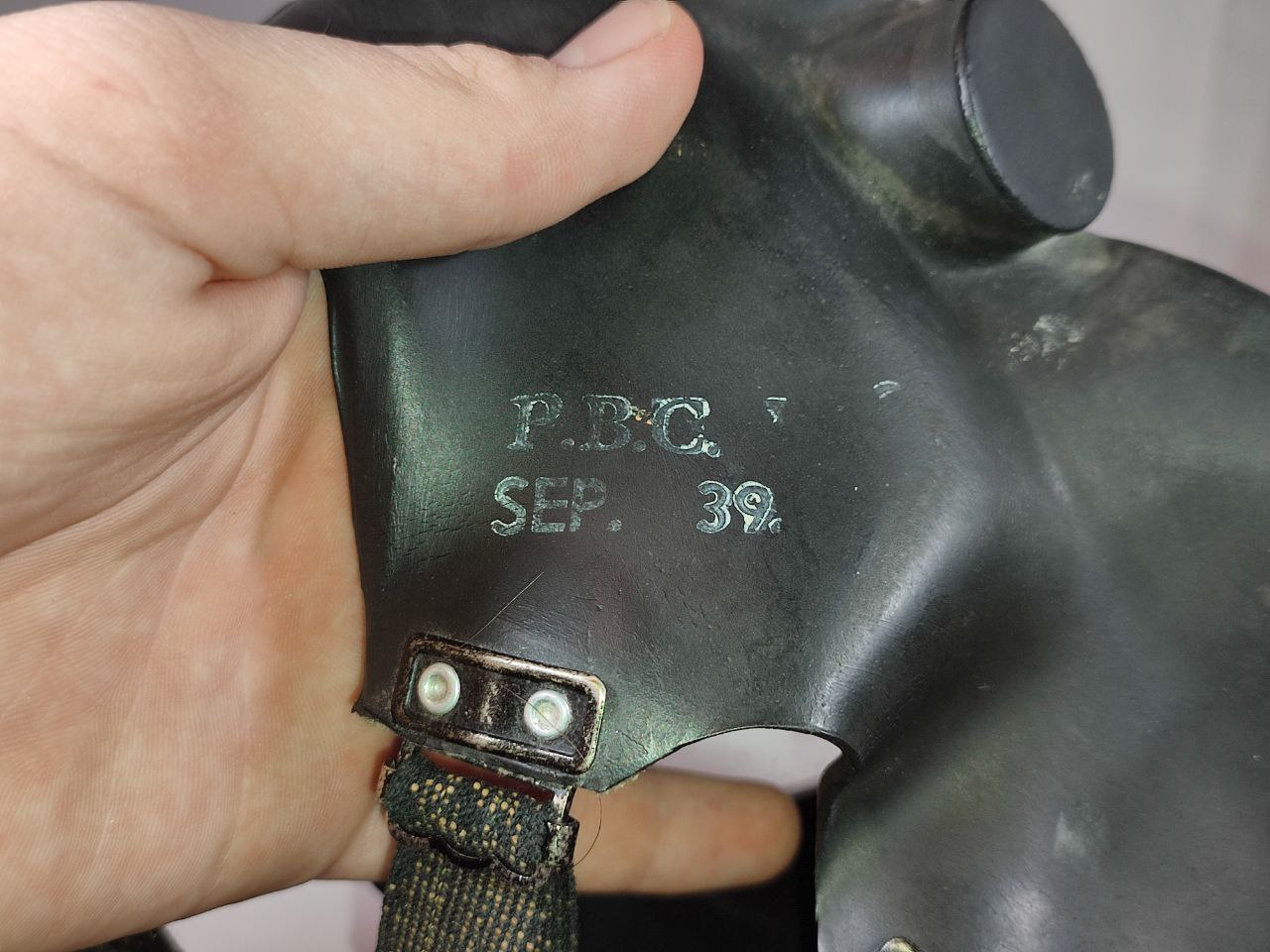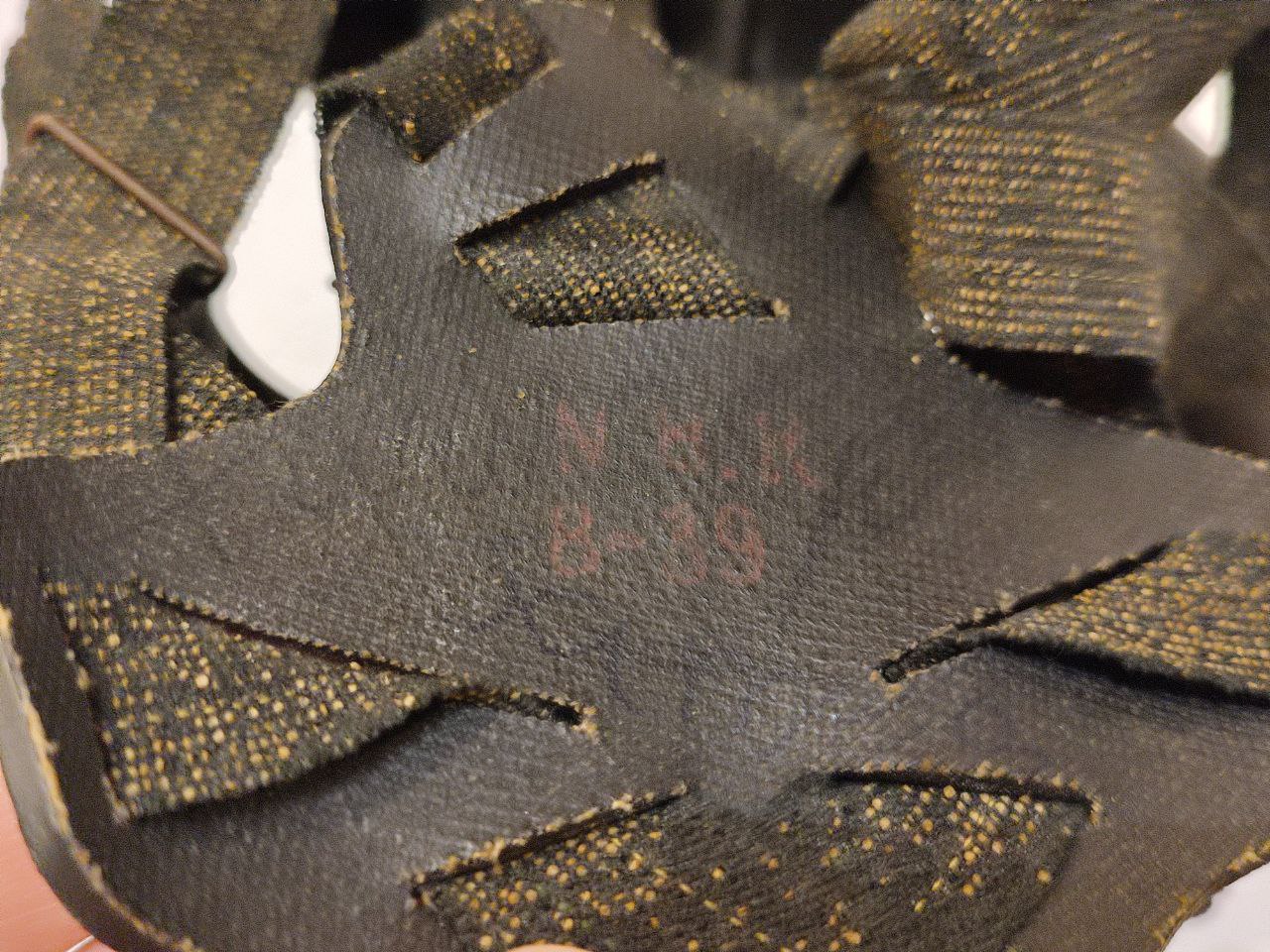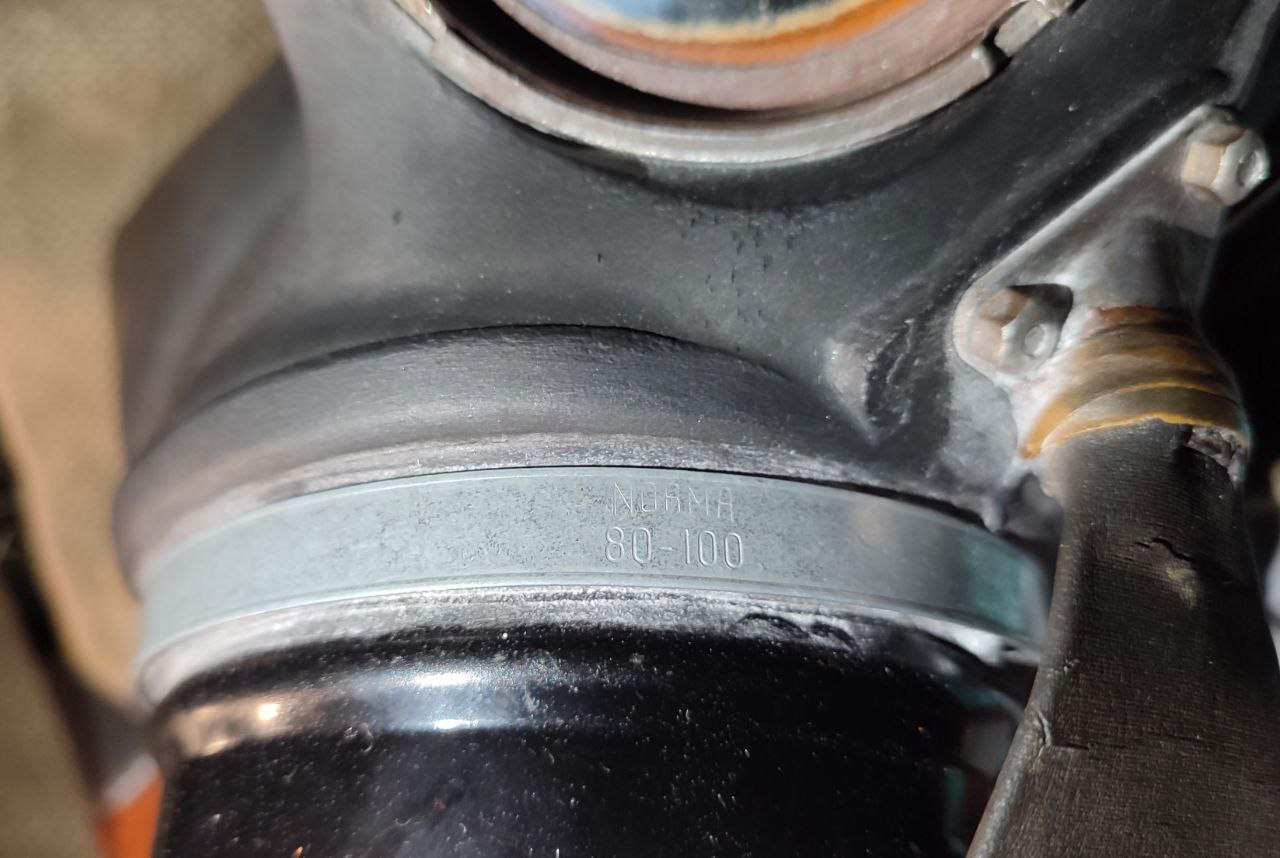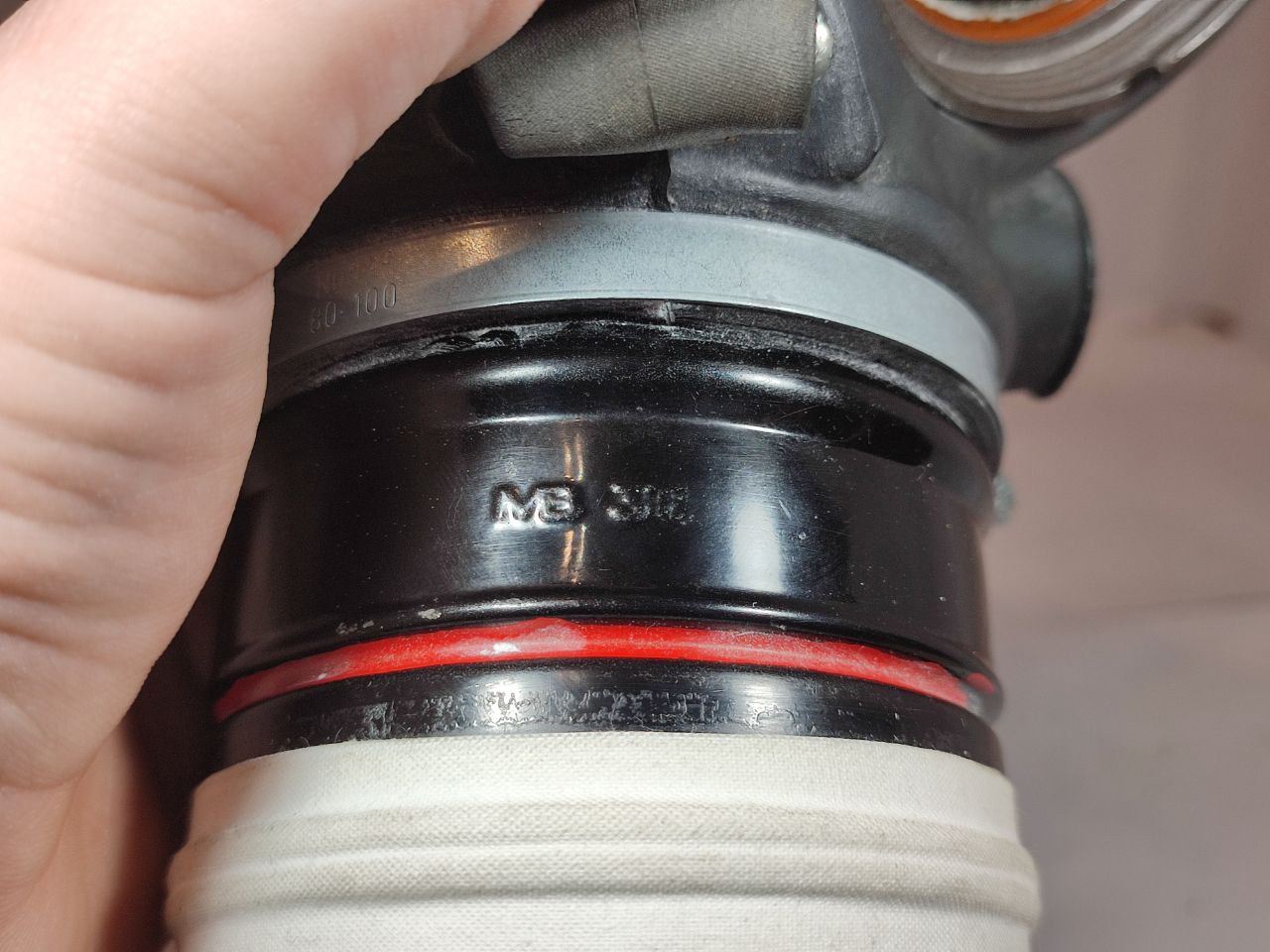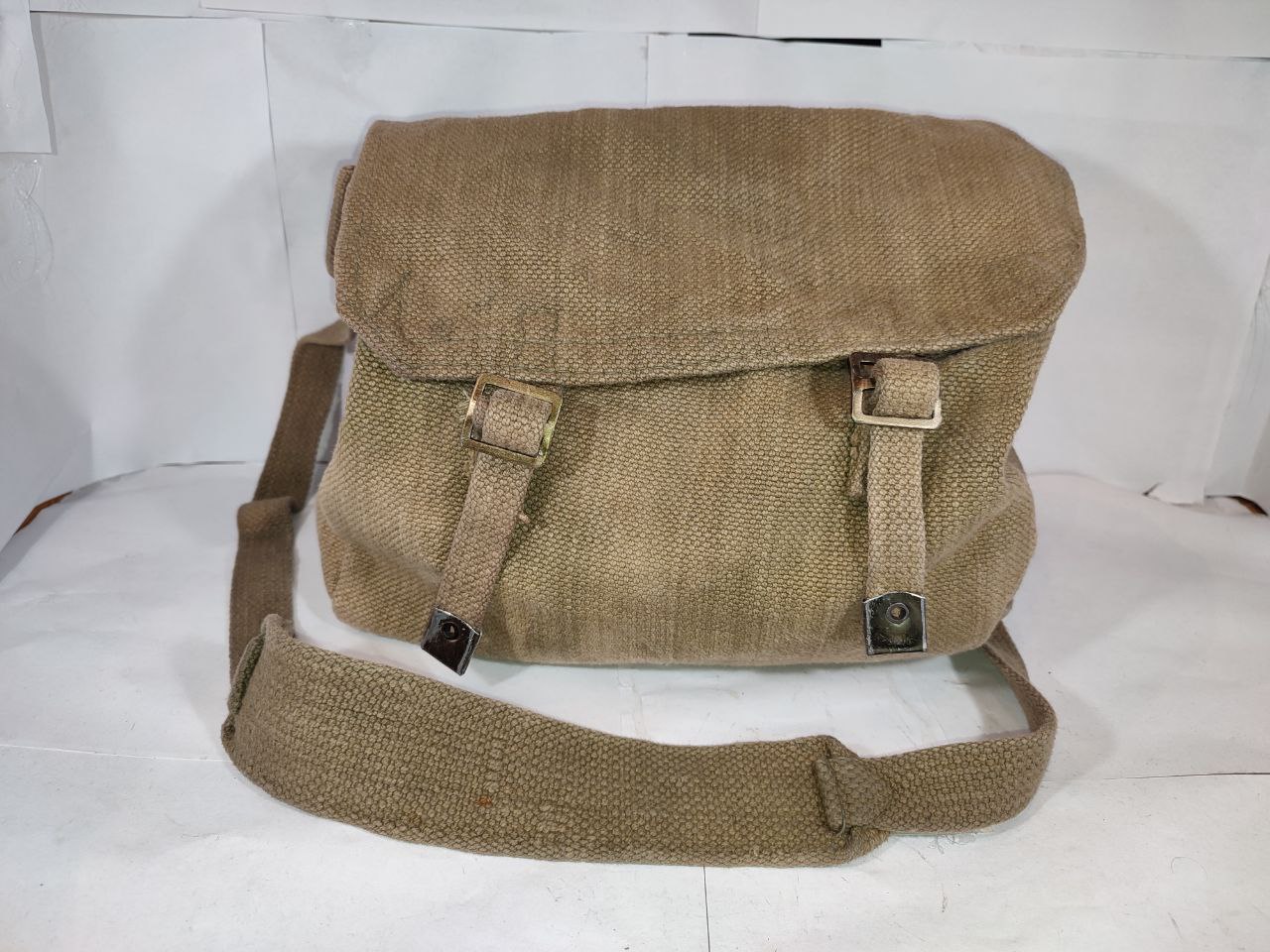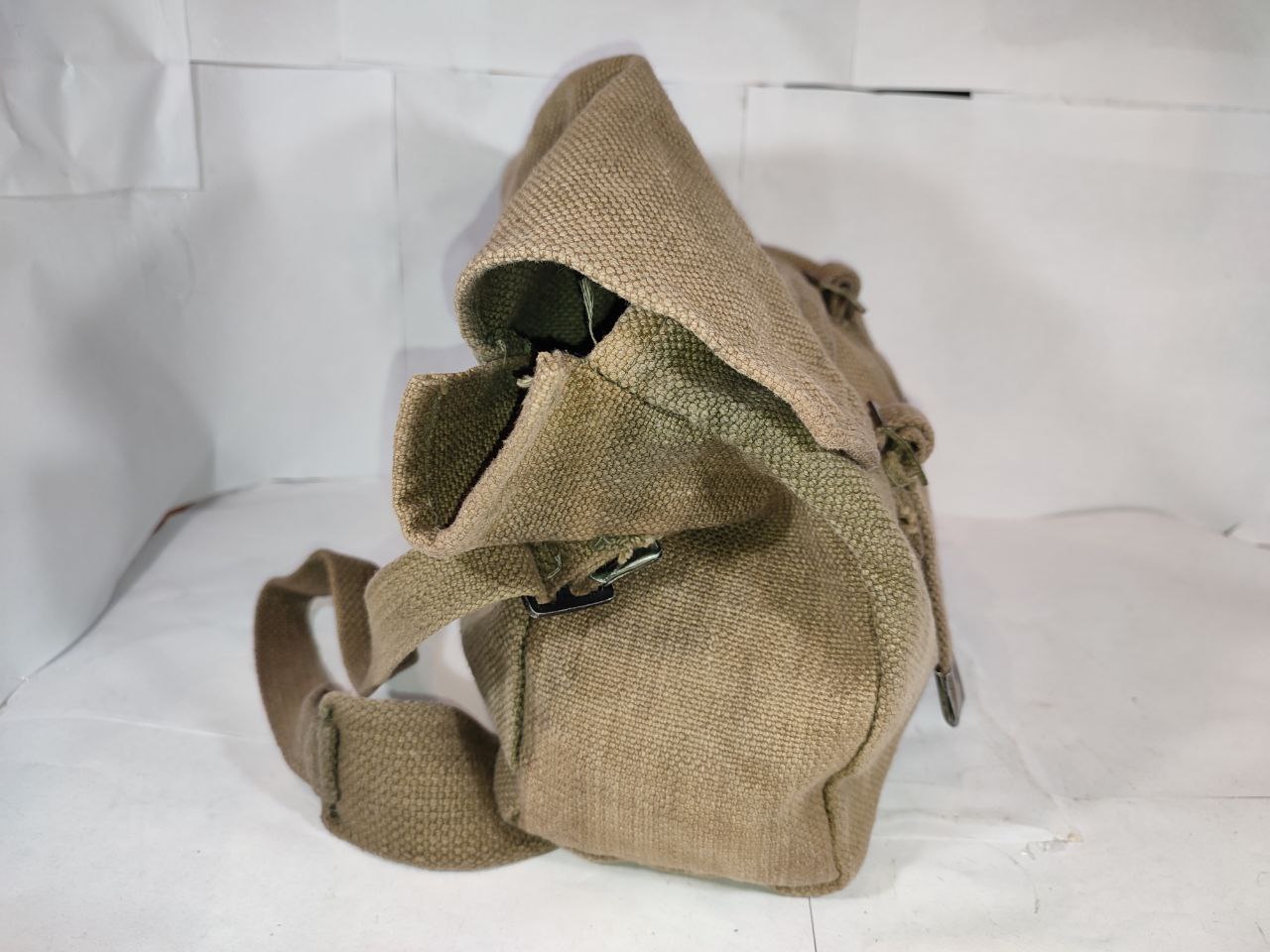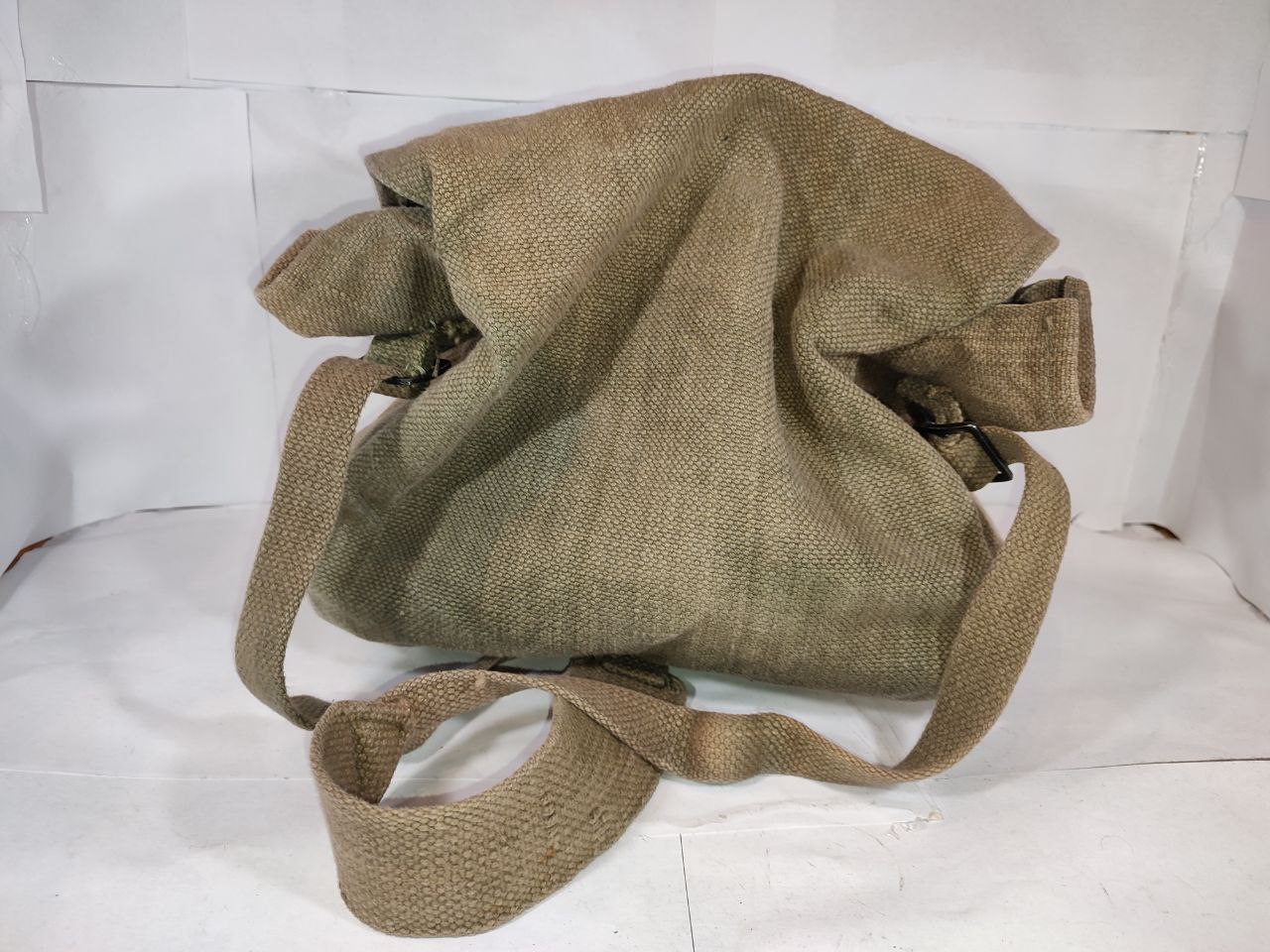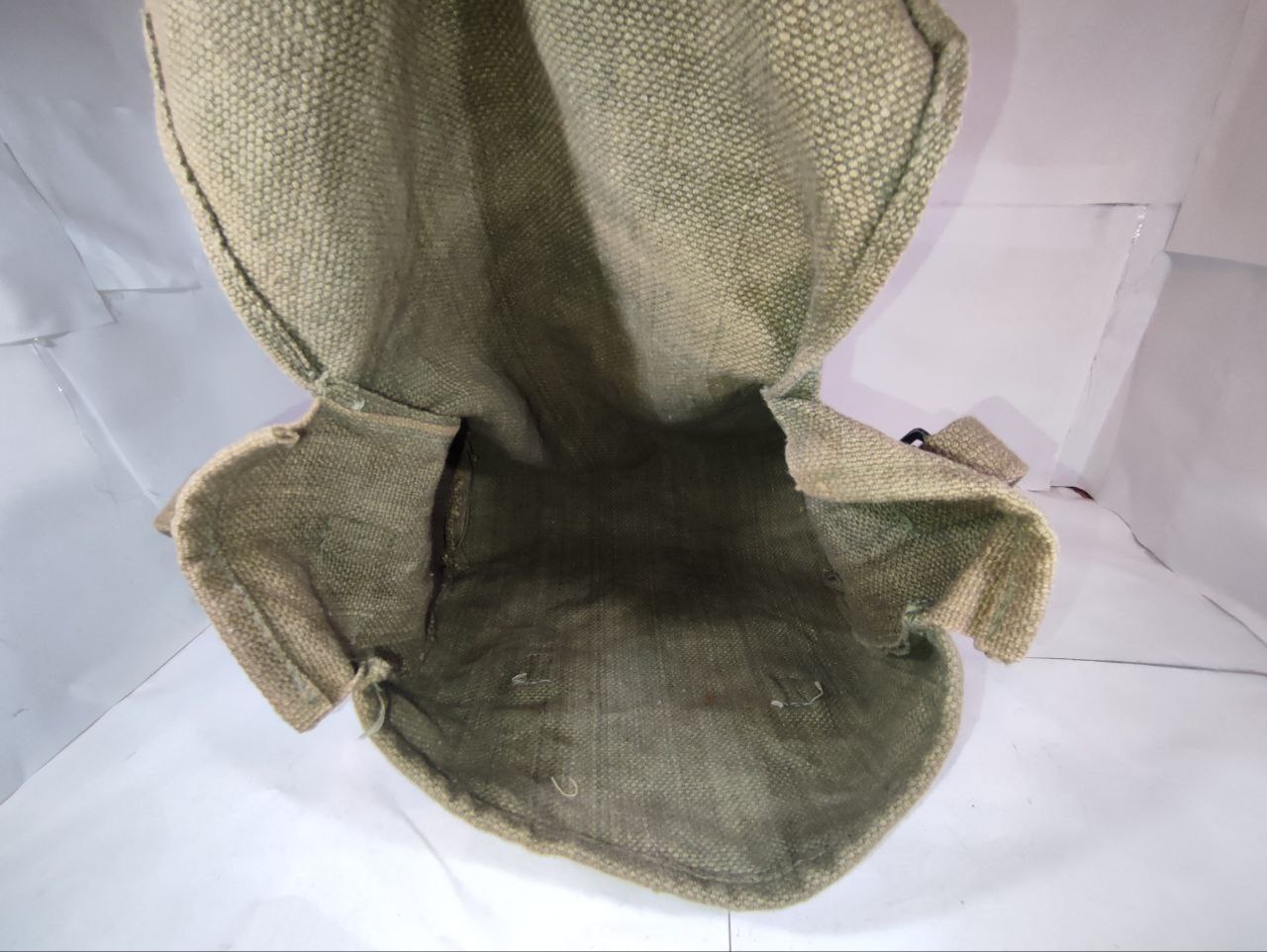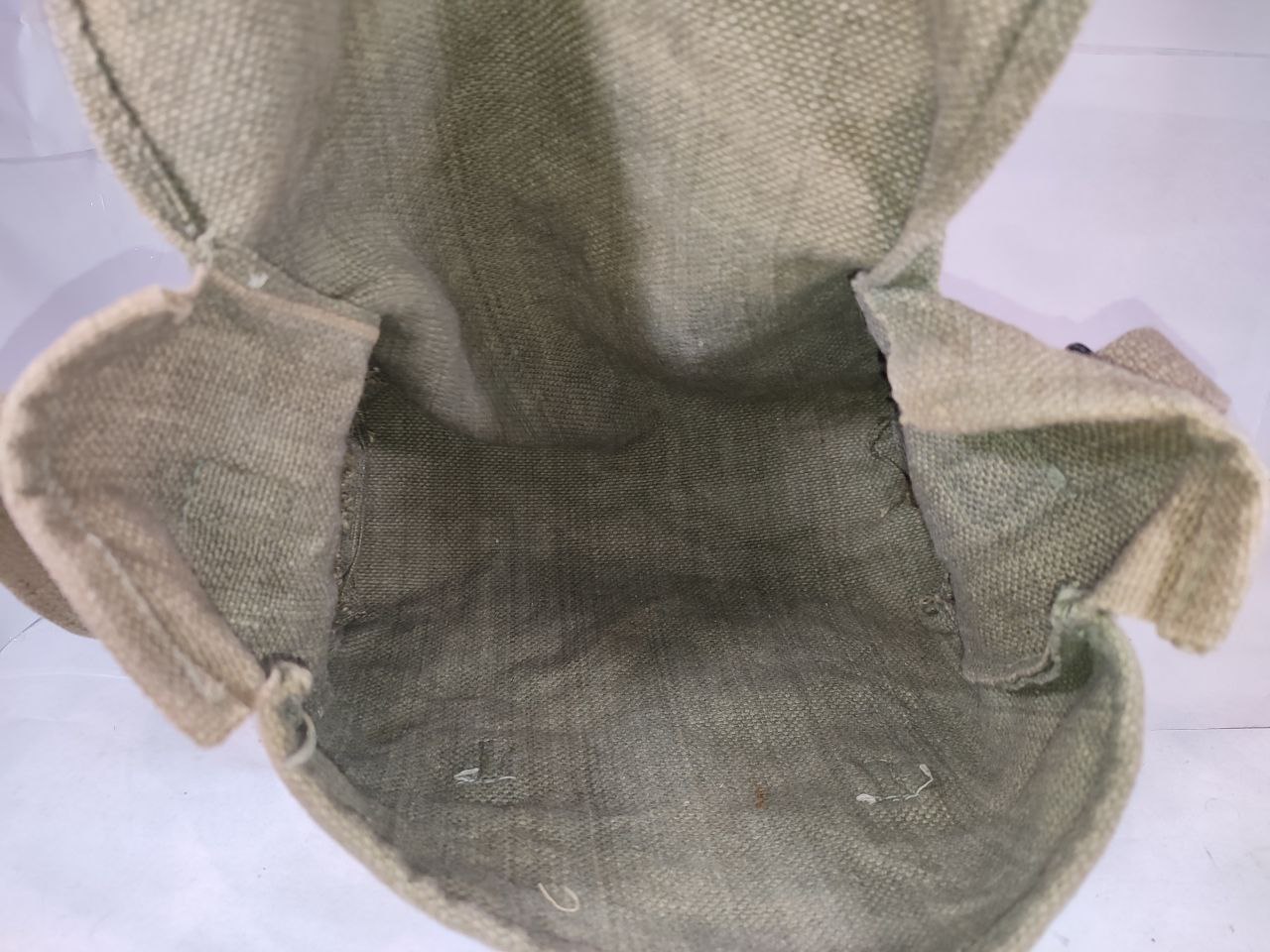Civilian Duty Respirator
The Civilian Duty Respirator is a British gas respirator designed for members of civilian air raid prevention services, civil defense services, telephone switchboard workers and people who may be called upon to perform their normal work in the presence of gases (e.g. doctors) but will not be exposed to prolonged exposure to gases. its high concentrations. Mine was manufactured in September of 1939 by P.B.C & Co. (Peter Brusey Cow & Co.). The first mask patents were filed by Major John A. Sadd on October 30, 1928, showing an early CDR prototype. The mask itself, compared to the General Civilian Respirator (GCR), is made much more carefully and of much thicker rubber, which is due to its use in much more severe conditions and much easier disinfection because thicker rubber could be disinfected with stronger agents. What is quite characteristic, the mask has a cylindrical protrusion on the left (when worn, on the right when looking at the mask from the front) it was used to enable the microphone to be connected after cutting off the upper piece of rubber, which was needed by people working in switchboards. Another interesting feature are the removable visor frames, which helped in disinfection and repair of any damage. A very strange feature in my art are the headpieces interwoven with some type of stones? Unfortunately, I have no idea what it is, but I can say that it is necessary and cleaning it is not the most pleasant. And at the end of the description of the structure of the mask itself, its most characteristic point, the inhalation and exhalation system. So let's start with the combined filter. Three versions of it were created: 1, i.e. CD MKI. It was made of cardboard and secured with a metal tip. However, this combined filter was very difficult to disinfect, so it was replaced with the CD MKII combined filter, which was already made of metal, which was probably the only difference. And the last version I have is CD MKIII, the main difference between CD MKII and CD MKIII was the valve which was not located at the bottom but at the top of the combination filter, which meant that it could be easily removed and disinfected, unlike CD MKII and CD MKI which They had absorbent inserts that had to be replaced after each use. The markings were also a big difference, i.e.: Red stripe - intended for civilian purposes Green stripe - The owner was asthmatic (the version with a green stripe contained wool impregnated with resin instead of asbestos). The last interesting thing is the additional "Context" pre-filter released in 1940. Adhered to the combined filter with white or black tape, it was created because the standard CD MKIII combined filter had serious deficiencies in the defense against arsenic and gases containing arsenic, and the "Context" pre-filter was supposed to repair this gap. Finishing the topic of the valve system, let's look at the next part, i.e. the "Nose" type exhalation valve. It works in such a way that when the air is exhaled, it finds an easier path through the combination filter, keeping the nose closed, when the exhalation occurs, the mask's inhalation valve closes and the air looking for a way out escapes. through the nose, opening it and flying out, then the cycle repeats. The mask carrying bag is made of thick, durable material and is very comfortable.
